In the sky - Chkalov. 110 Birth Anniversary
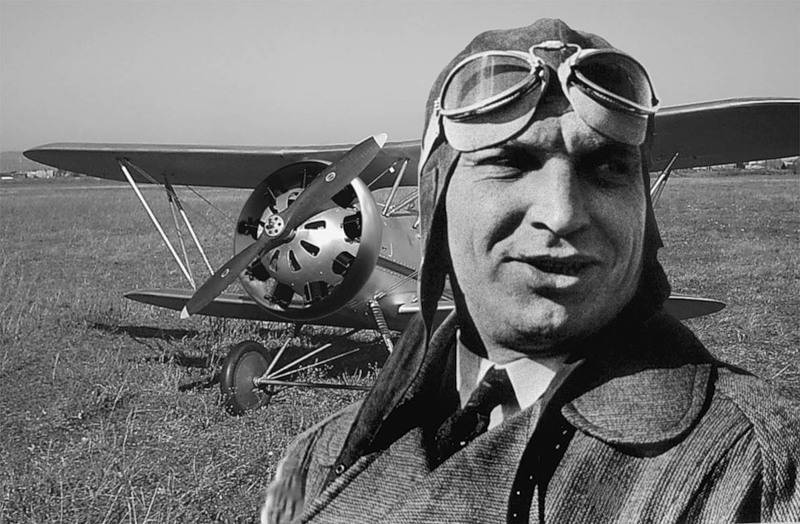
Sergey Aleksandrovich Korzinschikov
The remarkable Soviet sculptor Isaac Mendelevich gave a very accurate description of Valery Chkalov: “... a well-knit, but at the same time flexible figure, decisive, but quiet movements, working hands — all testifies to the great willpower. The characteristic face, as if prepared for modeling, is sculptural in shape and volume .... Everything in it was expressive: a forehead, blond hair lying on it, brightly defined lips, a strong nose, a stubborn chin. It is necessary to say separately about the eyes - they seemed to see far, far away around them. These full of life, curious eyes with early wrinkles around intently study you. It seems that Chkalov wants to comprehend the essence of the interlocutor. "
Chkalov always managed to do something that was unattainable for others. Mikhail Chkalov, Valeria’s great-grandfather, was the strongest barge haulder on the Volga. Grandfather - Grigory Chkalov - the most powerful mover on the pier. Father - Pavel Chkalov - a first-class master boilermaker from Nizhny Novgorod who was the best at facing a turbine, making burners and riveting. Pavel Grigoryevich earned a lot of money, in the Vasilyovo settlement, where he was called to repair riverboats, he bought a house with a carved porch and a garden around it.
Valery (baptized by Valerian, and at home simply called Averyan) was born on February 2 of the year 1904. Valeria's mother, Arina Ivanovna, died in 1910. A year later, the boy went to study at the local primary school, which he graduated from in 1916 year. Valery wanted to follow in the footsteps of his father, was interested in the processing of metals and even was trained to work on a lathe. Seeing this, Pavel Grigorievich sent his son to the Cherepovets vocational technical school. However, the time was hectic, and in 1918, the recreation school was closed, and Valery, without finishing it, returned home. The fourteen-year-old, wide-shouldered, short boy was strong beyond his years, and his father gave him a laborer to his factory.
After working for six months as a hammer thief, the young Chkalov got a job as a stoker in the Volga Shipping Company. He first saw the plane in 1919 on the Volga. While admiring the aircraft circling in the sky, he had an irresistible desire to survive the sensations of flight, to feel in the sky. After that, Valery Chkalov seriously “fell ill” aviation.
Initially, his desire seemed unrealizable. Resigning from work, he went to Novgorod and joined the Red Army. After some time, he managed to get directions to the local aviation fleet for the position of an airplane fitter. Chkalov covered the fuselages and airplanes with varnish, made cables and watched experienced mechanics repairing the flight equipment. He liked the job, he managed to fulfill his tasks and help others, at the same time he studied technical documentation. For the curiosity and zeal of Valery fell in love with the mechanics and pilots. Sometimes they even took him flying. Having visited the sky, Chkalov clearly understood that he could not have another life.
And, finally, his dream came true - in 1921, he achieved direction to the Egoryev Aviation School. There began a difficult period, Valeria needed to study not only special subjects, but also general education, such as physics, mathematics, Russian language, political literacy. Chkalov studied hard and persistently, trying to keep up with his comrades. In the spring of 1923 the theoretical school of the Air Force was successfully completed by him, all graduates received the title of Kraskom (red commander) and were immediately sent to the Borisoglebsky military aviation school for practical training.
16 arrived in Borisoglebsk Chkalov on April 1923. Among the teachers and pilots-instructors of the school were many participants in the civil war. From them, the cadets learned a lot of interesting and instructive about the glorious deeds of the first red pilots who selflessly fought against the enemies on the Southern Front, near Tsaritsyn, in Kakhovka, in Turkestan and other places. Chkalov listened to stories of air battles with the White Guards and interventionists with great interest. Such conversations were of great importance, contributing to the formation of character, patriotic feelings and love for their homeland from the future aviator.
Chkalov gave all his free time to work. He participated in the restructuring of the cavalry arena, helped at the airport and in the hangar, worked in the workshop on the assembly of aircraft, worked in the library. In addition, the energetic and sociable Volzhanin managed to participate in amateur art activities and play football. The instructor of his group was Ochev Veniamin Alekseevich - a demanding and strict pilot. Pilot classes began with taxiing on a Moran-Parasol aircraft. The cadets learned to control the device during a run on the ground, imitated takeoff and landing. So that the planes could not take off, sheathing was removed from the planes. Chkalov coped with the exercise perfectly, having finished taxiing among the first in the group and received admission to independent flights. Further studies only confirmed his uncommon abilities, indomitable thirst to fly, assertiveness in achieving their goals. The first graduation of the pilots of the new aviation school took place on October 9 1923 of the year. The certificate of Valery is written: “Chkalov is an example of a careful and intelligent pilot ... He quickly understands, acts vigorously and decisively, knows how to disclose the causes of errors and successfully correct them. Feels good speed and the plane ... ".
In the autumn of 1923, the ten best pilots from the first graduation went to Moscow to a military aviation school. Instructor Alexander Ivanovich Zhukov taught Chkalov aerobatics to combat German “Fokkers” and English “Martinside”. Here the future aviator learned to command the group. In May, 1924 Chkalov successfully graduated from this educational institution, received a military pilot certificate and was immediately sent to Serpukhov to the highest flying school of shooting, bombing and air combat. He was in the squad of Mikhail Mikhailovich Gromov - an excellent teacher, a great pilot and just a sincere person. In his memoirs, former instructor MM. Gromov described Valery Pavlovich in this way: “At all stages of his studies, he was constantly the first. Chkalov did not know the hesitation: he said - he did it. He walked, as they say, through. At a decisive moment, he discarded everything that prevented him from achieving success ... Chkalov did not know how to be afraid. He carried out his boldest plans before the feeling of fear could arise. The speed of his actions was equal to the speed of considerations. ”
In November, 1924 Chkalov became a fighter pilot, said goodbye to Serpukhov and departed to the first Red Banner Fighter Squadron, created from the squadron of the famous pilot Nesterov. Valery was sent to the Moskvina link, having received for the first training flights a shabby French Newpore-24-bis. The orderly daily service soon began to oppress Chkalov. The young pilot was not able to limit himself to obeying the order - he caught inspiration in the air, he passionately needed creativity and self-manifestation. Despite the prohibitions that existed in those years, he began to work out aerobatics on his own, and also improve the methods of training personnel.
Within a week, twenty-year-old Chkalov for risky flights on the old “Newpore” was in the guardhouse — for the first, but not the last time. It should be noted that the squadron commander Ivan Panfilovich Antoshin, who later became the head of the Odessa aviation school, played a huge role in his fate. “Batya”, as his subordinates called him, despite the coherence by decrees and frameworks of charters, perfectly understood the originality of his young pilot and repeatedly yielded to his requests to try to perform this or that figure in the air. Ivan Panfilovich also thought about the safety of Chkalov, transferring him to the more modern and durable German fighter Fokker D-7.
During the flights, Valery Pavlovich always set, at first glance, impossible tasks, tried to squeeze everything possible out of himself and out of the car. And for this I had serious problems with the authorities. None of the sources indicated exactly how many times the brave pilot stayed in the guardhouse, how many received penalties and how many times he was suspended from flying. He served only ten days for flying upside down, another ten days for experimenting with dead loops. “I, Dad, was stupid. I argued that I would make fifty loops, and got into the taste and scrolled all two hundred, ”Valery later explained to the cometsian. For a span between two nearby trees growing sideways - five days, for the legendary span under the Trinity Bridge in Leningrad - fifteen days. When the squadron commander learned about this incident, he asked Chkalov: “Can you imagine what will happen if all our pilots try to do the same tomorrow?”. “They will beat, they will surely beat,” Valery Pavlovich replied, without raising his head. He never made excuses, his blunt frankness bribed many. And he was driven out of military aviation. As a pilot, Chkalov was not equal, if the majority needed at least 50 flight hours to master the figure, then Valery was five enough. At the aerodrome they said that if there was no news about Chkalov’s plane for several hours, it means that the pilot just ran out of gas. He himself said with a grin to himself that he was talking.
A few years will pass and Chkalov’s indomitable fantasy will push him to invent and hone completely new aerobatic figures. Like everything new, its elements will at first be perceived with hostility, and Chkalov will be branded a “violator”. Only then comes the understanding of what Valery Pavlovich has done in the field of aviation.
16 November 1925 military tribunal sentenced Chkalov to one year’s imprisonment. The reason was a serious disciplinary violation - a fight in a drunken state. Later the term of imprisonment for the pilot was reduced to six months. After returning to the unit, the pilot in 1926 took part in the redeployment of the entire first Red Banner Aviation Squadron to the military airfield of the city of Trotsk (now Gatchina). In the spring of 1927, after Chkalov attended courses to improve flight skills, the command offered him to show what he had learned. Valery Pavlovich decided to demonstrate all the figures, including those that only he could perform in the air. Such flights Gatchina airfield has not yet seen. When planning for landing, Chkalov performed a “slow-motion barrel” and, having successfully landed the plane, joyful jumped out of it. However, the happy state soon faded: the commander, thanking him for the equipment, made only the comments that had been made according to the instructions, but the brigade commander gave twenty days to the guardhouse and suspended them for the same days.
In 1927, Valery Chkalov married the Leningrad teacher of the Russian language and literature Olga Erazmovna Orekhova. They met in 1925 year, their affair lasted for two years, and when she graduated from college, Valery made her an offer. Chkalov was fabulously lucky with his wife - Olga Erazmovna always understood everything correctly. In the house the pilot was only on short visits; in the eleven years of their marriage, together they lived no more than six. Usually he did not inform her about his business trips and plans, he could leave or come at any moment. She did not ask too many questions, always waited for him and was proud of him. In January 1928, their son Igor was born. By this time, Valery Pavlovich had already been transferred to Bryansk, and from there he constantly wrote letters: “Lelik, did the sons grow up? .. How does he sit? .. Is he naughty or not? .. How did he grow up? .. Weight, what? .. You know how I want to know everything! You can't put your soul on paper, well, you understand it already. ”
8 November 1927 of the year Chkalov demonstrated the achievements of Soviet aviation in front of members of the government in Moscow. Among other things, he presented fifteen aerobatic maneuvers of his own invention, including flying up wheels and an ascending corkscrew. Baidukov described the performance in the sky this way: “Valery, diving from the height, flirted with the earth, almost catching it in double and quadruple flips through the wing, then, restoring height, screwed up, completing the ascents with beautiful immelmans or unexpected, unusual headfirst flights ... . By the purity and frisky gaiety of his flight was like flying swifts in the summer. ” On the same day, in the evening, Valery wrote home: “Lelik, just imagine, then, for what they send me to the guardhouse, they are marked with a money prize!”.
After a brilliant performance, Chkalov was put in command of a fighter link. However, in the new position he was still engaged in aerobatics, and one day it ended tragically — several planes of his flight were broken down during the flight flights. Fortunately, no one died, however, according to the laws of that time, Chkalov was arrested and brought before a military tribunal. On it, Valery remembered everything. And flying under the Trinity Bridge, and flying around St. Isaac's Cathedral, and "Gatchina freaks". Chkalov was accused of numerous violations of discipline and recklessness. According to the 30 verdict of October 1928, he was dismissed from the Red Army and sentenced to one year in prison.
He was placed in a solitary cell, located on the second floor of the Bryansk prison. The pilot was allowed to keep a pencil and paper in his cell, Chkalov wrote in an improvised diary: “Days are monotonous, the cell is small but warm. At night I can not sleep long. Do not give rest to the thought of his wife and son. How are they in Leningrad? ” There was absolutely nothing to do in prison; he re-read all the books in the local library, listened to the radio. “Tedious, oppressive, heavy longing. Slept in the afternoon. Woke up when they brought lunch. I lay, sat, walked, everything was already tired, ”it was also written in his diary.
However, the fame of the pilot was already too great in the country. Thanks to the petition of former commanders, as well as the intervention of a number of high-ranking persons, Chkalov’s punishment was replaced with a conditional sentence. In total, the pilot stayed in the Bryansk prison ... nineteen days. Although, when you read his notes, it seems that he has been there for at least a year. Valery Pavlovich generally had such a peculiarity - he was in a terrible hurry to live. He knew for sure that fate had measured quite a bit ...
Returning to his family in Leningrad, the unemployed Chkalov sat down for textbooks and books. Not hoping to return to the army, he decided to go to college. However, longing for the airfield, the cockpit and the blue sky did not give him rest. Valery gladly accepted the offer to work as an instructor pilot at the local branch of Osoaviahima. He flew on a pleasure plane, rolled tourists and passengers, and taught the boys flight skills. And again, thanks to the intervention of his former commanders, a decision was made to return the most skilled aviator to fighter aircraft as a test pilot of the Air Force Scientific Research Institute. The Leningrad period of his life was over, Chkalov was enrolled in the staff of the institute on November 11, 1930.
Valery Pavlovich had to re-learn how to fly at the scientific research institute. At the institute, flying machines of various designs and types were tested. At this place, he worked for two years, having mastered the technique of piloting about thirty different types of aircraft and made more than eight hundred test flights. In particular, he owns the honor of checking the unique "air shelf" VS Vakhmistrov - a bomber carrying two fighters on the wings. In 1932, the Air Force Research Institute was relocated from the Khodynsky field to an airfield in the Shchelkovo area. The translation took place in a solemn atmosphere, becoming the first air parade in the country. Over forty aircraft in a column of three in a row flew over Red Square. At their head was a bomber "TB-3", managed by the crew of Chkalov.
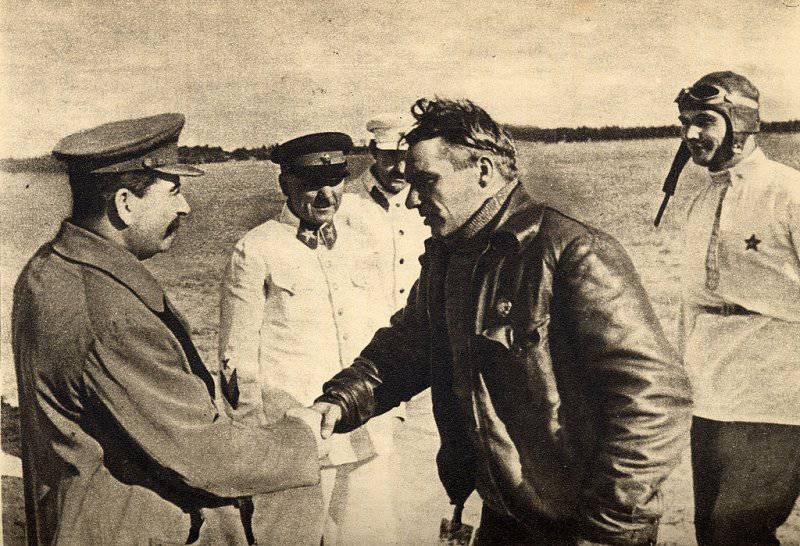
Stalin, Voroshilov, Kaganovich, Chkalov and Belyakov. Meeting after the flight to the Far East. Shchelkovo airfield, 10 August 1936
And in 1933, Valery Pavlovich was transferred to work at the Moscow Aviation Plant. Menzhinsky. Working as a full-time factory test pilot, Chkalov tested new types of aircraft. The work was interesting, thanks to Valery Pavlovich, who always worked in extreme conditions, the hidden capabilities of the aircraft were discovered. He took part in the tests of the best fighters of the thirties: I-15 and I-16, circled the fighters tanks “VIT-1” and “VIT-2”, heavy bombers “TB-1” and “TB-3”, as well as a huge number of other experimental vehicles of the Polikarpov design bureau. At the same time, Chkalov continued to demonstrate aerobatics every year during the October and May holidays. On May 5, 1935, pilot Valery Chkalov and aircraft designer Nikolai Polikarpov were awarded the Order of Lenin for creating the best-in-class fighters.
At the end of 1935, one of Chkalov’s closest friends, test pilot Georgy Baidukov, offered him help in organizing a flight from the Soviet Union to the United States over the North Pole, as well as to lead the crew of the aircraft. Valery Pavlovich had even dreamed about long-distance flights before, but for the first time a concrete proposal was made, even the plane was called ANT-25, by the designer Tupolev, who the aviator knew as his five fingers. Early next year, Chkalov, Belyakov and Baidukov appealed to the government to carry out this flight, but Stalin, fearing a repetition of the unsuccessful attempt of Sigismund Levanevsky, indicated a different route at the same distance: Moscow - Petropavlovsk-Kamchatsky. The flight began on 20 July 1936 and lasted 56 hours. The landing place was the sand spit on the island Udd. The crew fulfilled the planned program with excess, because, having reached Kamchatka, the pilots, due to bad weather, turned towards the mainland, landing a few hours later not far from Nikolaevsk-on-Amur. The plane Chkalov planted where it was almost impossible to land it - around deep ravines filled with water, large pebbles, boulders. The total length of the route was 9370 kilometers, and the crew members were awarded the title Hero of the Soviet Union. Upon arrival, Chkalov was awarded the second Order of Lenin. The Gold Star Medal, which was introduced after his death, was given to the children of the celebrated pilot in the 2004 year. The importance of this flight is indicated by the fact that Stalin personally came to the Moscow airfield to meet the returning heroes.
After this flight, Chkalov asked the leadership to allow him to go to war in Spain. The pilot was impatient to test his skills under combat conditions, he dreamed of trying to grapple with the fascist ME-16 on the AND-109 repeatedly tested by him. However, he was not allowed to. But, Chkalov would not be Chkalov, had he not been able to “press” the project on the flight to the USA via the North Pole — at the end of spring 1937 permission was finally obtained. The plane with the crew of the navigator Belyakov and the pilots Chkalov and Baidukov took off on the tested ANT-25 into the air early in the morning of June 18, and the flight was completed in the evening on June 13, the aircraft Valery Pavlovich landed safely at the military airfield of Vancouver, breaking the fixed distance for X. hours and 20 minutes. Flight speed according to the logbook averaged 63 kilometers per hour. The pole itself Chkalov overslept - he was not on duty. Friends did not wake the pilot, for which he later scolded them for a long time. The conditions of this flight were much more complicated than the previous time - the plane constantly hit the cyclone, there was no visibility, there were problems with frosting, there was not enough oxygen, and the mask in turn passed from one crew member to another. However, both the people and the aircraft passed the test with honor; all participants were awarded orders of the Red Banner for this feat.
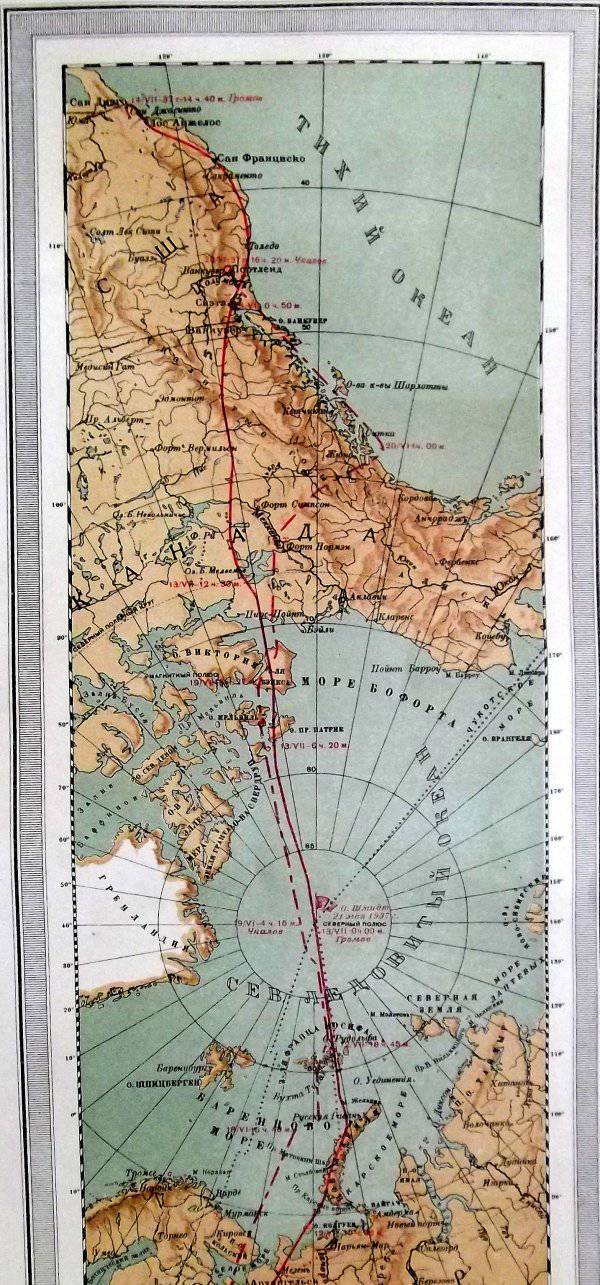
Non-stop flights of the Arctic to 1937 by the crews of Chkalov and Gromov (“Atlas of the Red Army Commander”, 1938)
The appearance of a Soviet aircraft in the United States shocked the whole world, while no state had such aircraft. Moreover, a cursory inspection of the aircraft showed that Chkalov could easily get to Los Angeles after spending a few more hours in the sky. After landing, the pilots made a small trip to the cities of America, and on June 27 they were received by President Roosevelt in the White House. He shook Valery Pavlovich’s hand for a long time and even rose from his chair with the help of assistants in order to greet the heroes while standing. After some time, another domestic aircraft under the command of Gromov flew across the North Pole. And the next same route took Sigismund Levanevsky, a participant in the operation to rescue the Chelyuskinites. Over the Arctic Ocean, his plane was gone, so far nothing is known about the fate of the crew.
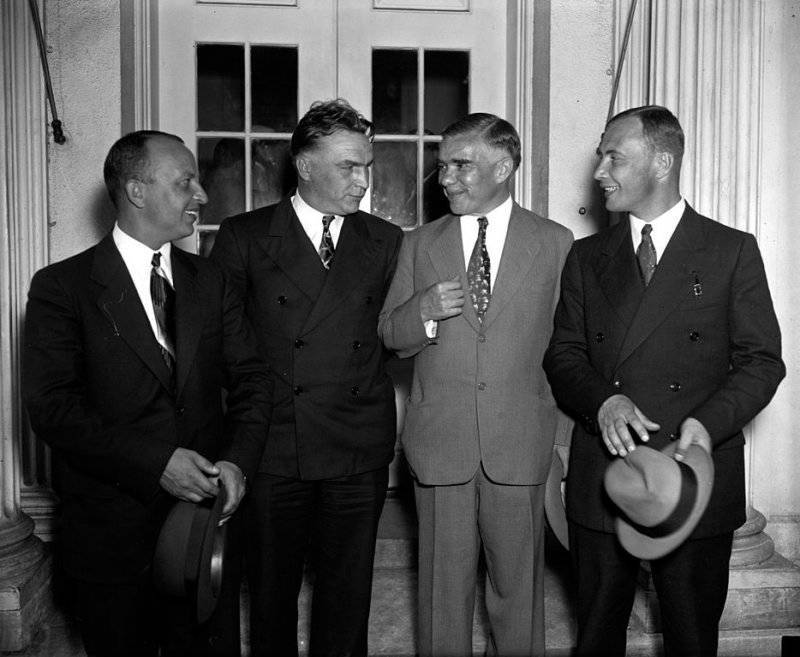
Baidukov, Chkalov, plenipotentiary of the USSR Troyanovsky and Belyakov after receiving a visit from US President Roosevelt in the White House. 28 June 1937
After returning to the USSR, Valery Pavlovich continued his work at the plant. He became a popular favorite, a favorite of Stalin himself. According to the memoirs of contemporaries, Joseph Vissrionovich truly loved the “hero-pilot”. After their acquaintance, the “leader” singled out a car with a driver for him, and then presented him with a private plane Po-2. Chkalov kept him in one of the hangars of the Khimki aircraft factory, rolling his son and friends on weekends. Also, Stalin demanded that Valery Pavlovich be present at all state events. Slowly but surely, the pilot turned into a political figure. Chkalov’s popularity in the country was enormous when in December 1937 of the year he was nominated as a deputy of the Supreme Soviet from the Gorky constituency, more than two and a half million voters voted for him unanimously. For outstanding service in February 1938, he was awarded the title of kombrig. However, it can be said with certainty that in the circle of the Stalinist “aristocracy” the direct and defiantly sharp Valery Chkalov always looked like a black sheep. In 1938, after the session of the Supreme Council, Joseph Vissarionovich invited the pilot to come over. During the conversation, Stalin said bluntly that he wanted to remove Comrade Yezhov from office and entrust him with the honorary position of Commissar of Internal Affairs. But Valery Pavlovich refused. He had completely different plans for the future, he dreamed of bringing to the mind new fighters, which were estimated to be superior to the best examples of German technology, as well as finishing the round-the-world project being developed with the faithful Belyakov and Baydukov.
By the beginning of the 1938, the Soviet fighter "I-16" no longer met the requirements of time. Polikarp Design Bureau began to prepare a replacement for it - the newest fighter "I-180", equipped with a powerful motor S.К. Tumanovsky. I wanted to hand over a super modern aircraft as soon as possible, preferably to Stalin’s birthday (that is, to 21 December), so all the work went in a terrible hurry. Polikarpov, a protestor, was suspended from work on preparing the aircraft for departure. December 1 Valery Chkalov urgently called out of vacation for a series of tests "I-180". December 2 on the assembled aircraft were found as many 200 defects. 7 of December “I-180” was delivered to the airfield, and 10 of Chkalov's numbers was steering the aircraft, the engine was often “deaf”, and when re-steering 12 in December, the gas control system broke down.
The first flight of the fighter "I-180" took place 15 December 1938 of the year. Valery Pavlovich had to conduct only the very first test, after which the aircraft would pass into the hands of another pilot. According to the memoirs, the air temperature on this day was about minus 24 ° C. Polikarpov dissuaded Chkalov from flying, but the pilot did not agree. He safely rose into the air and, according to the flight task, made a circle over the Central airfield at an altitude of about 600 meters, and then, leaving the borders of the Khodynka field, went to the second, with a long distance, and at an altitude of one and a half thousand meters. When there was about 500 meters left until the landing strip, the fighter's engine died out. Chkalov tried to reach the airfield, but at the very last moment, he obviously realized that the plane would not fly over the residential barracks in which people could be. "And-180" lay in the left turn, dodged buildings and crashed into a high-voltage pole. The collision was so strong that the pilot was thrown out with the steering wheel from the cockpit. Without regaining consciousness, Valery Chkalov died from his injuries in the Botkin hospital. He was just 34 of the year.
A special commission investigating the circumstances of the death of the pilot found more than forty unresolved defects in the fighter’s systems. The aircraft was allowed to be tested in a completely unsatisfactory condition: the carburetor, propeller, engine — all the most important components could not withstand the load in the air; in addition, there was no controlled cooling system in the aircraft. In the case of Chkalov, over sixty people were arrested. On the question of who was to blame, they officially named the names of the plant's director Usachev, the chief designer Polikarpov and his deputy, a talented engineer Tomashevich. Unfortunately, after this career of the “king of fighters” Polikarpov began to decline sharply - no one, except for Valery Chkalov, could learn so well his car to fly.
“A little in aviation is not considered” - Chkalov liked to talk and was convinced that saving his own life is the last thing that needs to be thought of in an extreme situation. His image, life, fearlessness, daring will and loyalty to the Motherland served and will serve as an inspiring example for every Russian pilot. During the Great Patriotic War, the pilots took his photograph with them. Chkalov was an outstanding aviator, and he never put himself above the others. In the United States, talking to correspondents, he mentioned that the co-pilot Baidukov was a higher-class pilot, that he was able to steer the aircraft in the clouds "blindly." Not everyone is capable of such recognition. Valery Pavlovich had a huge number of friends. He was loved and respected for his character, for his directness, for his responsiveness and for his desire to help his comrades when the need arose. Chkalov adored the feast and the guests. When he lived at home, he could have a company of up to a hundred people. And he managed to feed and drink everyone, and with the best products. Kozlovsky and Sholokhov, Moskvin and Tolstoy, Kachalov and Prishvin came to Chkalov. The pilot joked a lot, liked to sing Burlatz songs with friends. Being away from home, he often wrote letters to his wife, a lot of letters. They wanted to have six children, but only three came out. The first daughter was born in May 1935, she was named Valeria in honor of her father. The second girl was born in the summer of 1939, six months after Chkalov’s death. In honor of her mother, she was named Olga. Son Igor gave forty years of his life to military aviation.
Based on articles from www.biography-peoples.ru and www.vokrugsveta.ru
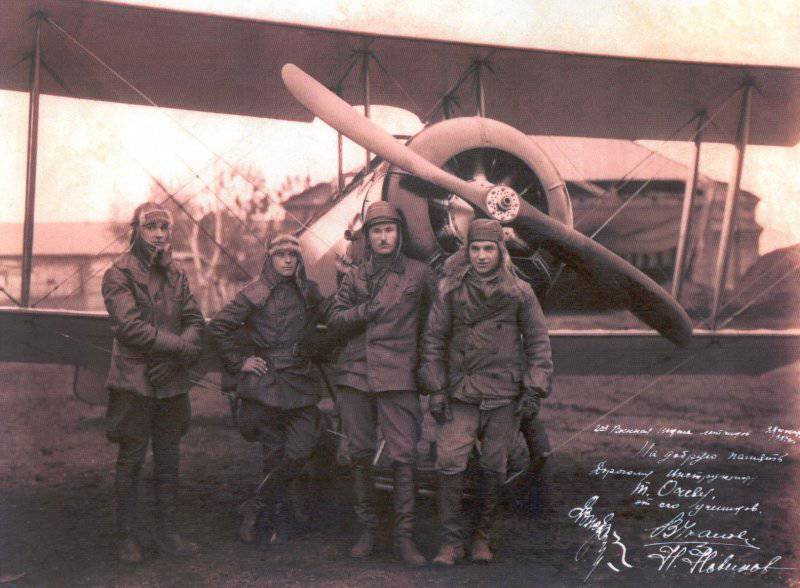
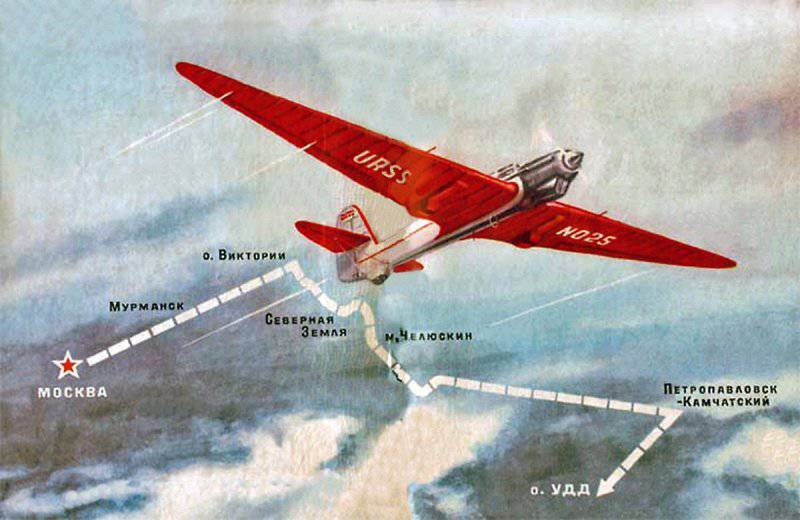
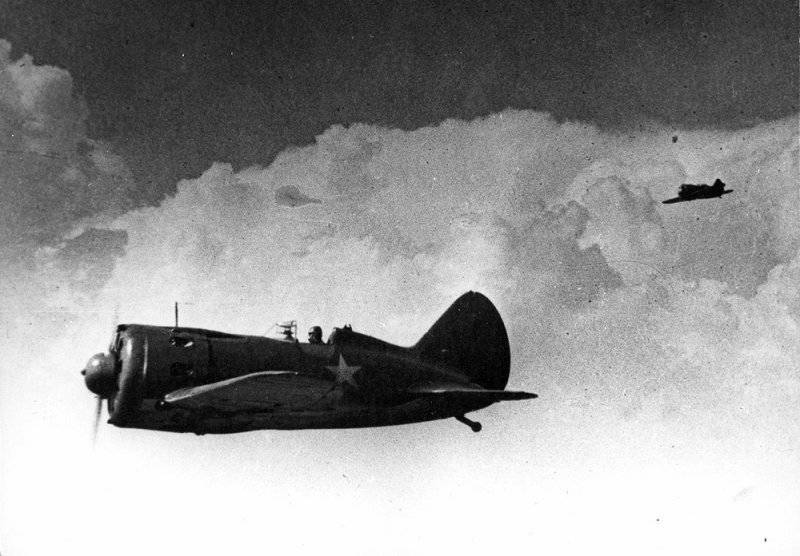
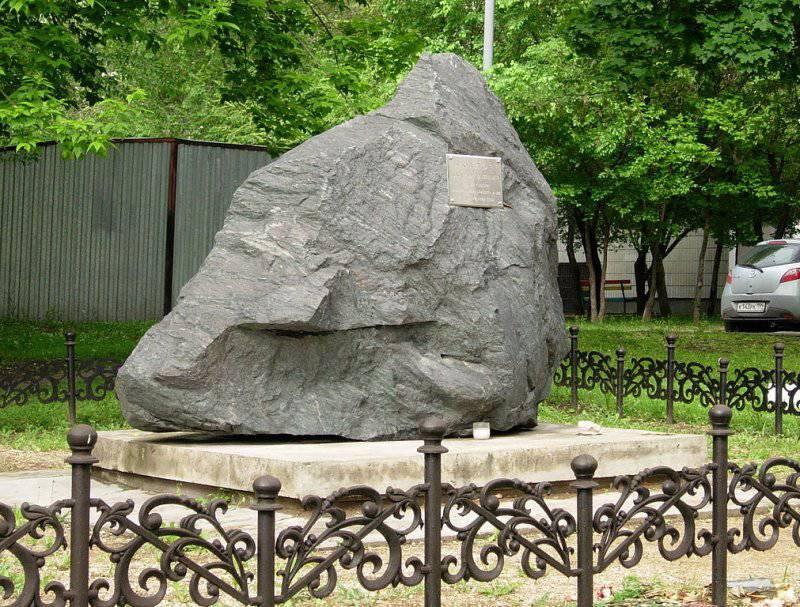
Information